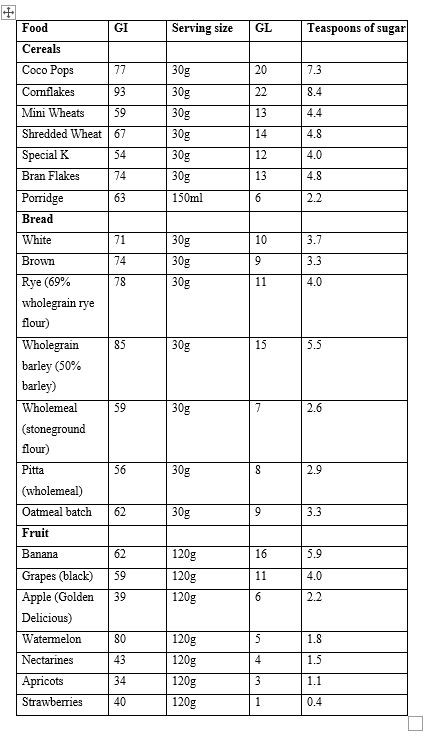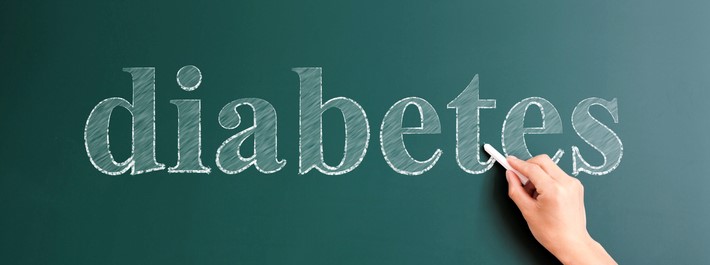Spear-heading this conversion is Dr David Unwin, a GP from Southport, who’s low GL principles have been applied to a book, The Diabetes Weight Loss Cookbook (Octopus), authored by cooks Katie and Giancarlo Caldesi with nutritional therapist Jenny Phillips, that was recently serialised over six days in the Daily Mail.
Last week several hundred doctors met at a Public Health Collaboration conference to learn how to use diet not drugs to reverse disease. Unwin’s impressive results reversing diabetes have been published in the Practical Diabetes1. Also talking at this conference was Dr Robert Lustig, author FatThere are many different types of fats; polyunsaturated, monounsaturated, hydrogenated, saturated and trans fat. The body requires good fats (polyunsaturated and monounsaturated) in order to… Chance, who explains exactly how sugar and junk food gets you addicted and why a ‘calorieCalories are a measure of the amount of energy in food. Knowing how many calories are in the food we eat allows us to balance… is not a calorie’ because we metabolise fat and sugar quite differently. That’s why you lose more weight on either a low GL diet or a high fat, low carb ketogenic diet than a conventional low calorie low fat diet.
This is all music to my ears, having spent three decades extolling the virtues of eating a low GL diet. David Unwin took my low GL principles to heart, converted the low GL score to ‘teaspoon of sugar equivalent’ to show just what a serving or rice (10) or a banana(6) looks like compared to sugar. It’s a great visual representation the drives the message home. See below.

Adapted, with permission, from David Unwin’s charts in the Journal of InsulinInsulin is a hormone made by the pancreas. It is responsible for making the body’s cells absorb glucose (sugar) from the blood…. Resistance (2016)
I can’t believe seven years have passed since I published Say No to Diabetes in 2011 and got trashed for saying that type-2 diabetes is reversible. Since then thousands of people with diabetes have done just that. This new cookbook adds further recipes to mine in the Low GL Diet Cookbook.
What’s new? Nothing much except for a few nuances and the fact that the tide is turning. The tipping point has been reached. “Now I can come out” one low GL enthusiast GP told me. She, and others, have fought with dieticians who continue to extol calorie counting as the means to control weight loss, and low fat high carb diets.
Speaking generally this new movement of low carb doctors don’t know about the merits of adding in supplements such as chromium, cinnamon extract and glucomannan fibre (Carboslow) which assists weight loss together with the diet. These kind of things just don’t get taught. But, if bucking the conventional and wrong diet advice wasn’t enough of a challenge, trying to prescribe supplements would prove even more challenging, especially because they compare extremely favourably, without the adverse effects, with diabetes drugs and big pharma wouldn’t like that! Dr Unwin’s practice actually achieved the lowest level of drug prescriptions – good for NHS budgets and people but bad for drug sales.
The key principles are:
1. Eat low GL foods – not more than 40 a day – 10 per main meal, 5 GLs per snack
2. Always eat proteinProteins are large molecules consisting of chains of amino acids. Proteins are essential nutrients for the human body – they are a building block of… when you have carbs
3. Eat three 10 GLs meals and 2 snacks a day*
Now, in the Diabetes Cookbook they’re a bit down on three meals and two snacks, suggesting you skip the snacks or do intermittent fasting. But I find time and time again, if a person misses an afternoon snack they can come home with too low a blood sugar and then undo all the good work of the day by eating too much in the evening. Resistance is like a muscle and by the end of the day one’s resistance is less, even lower if you have a glass of wine, and ev en lower still if you come home with a low blood sugar.
The intermittent fasting technique I like the most is 18 hours between dinner and lunch, but having a Hybrid Latté for ‘breakfast’. This is essentially carb-free. So, if you have a low GL dinner at 7pm, Hybrid latté in the morning, brunch at 1pm, afternoon snack at 4pm and dinner at 7pm this kind of regime works really well for most people. See more about my Hybrid Diet at www.hybriddiet.co.uk
REFERENCES
D. Unwin and J. Unwin, ‘Low carbohydrate diet to achieve weight loss and improve HbA1c in type 2 diabetes and pre-diabetes: experience from one general practice’, Practical Diabetes (2014), vol 31(2):76–79.


Comments
Join the Conversation on our Facebook Page